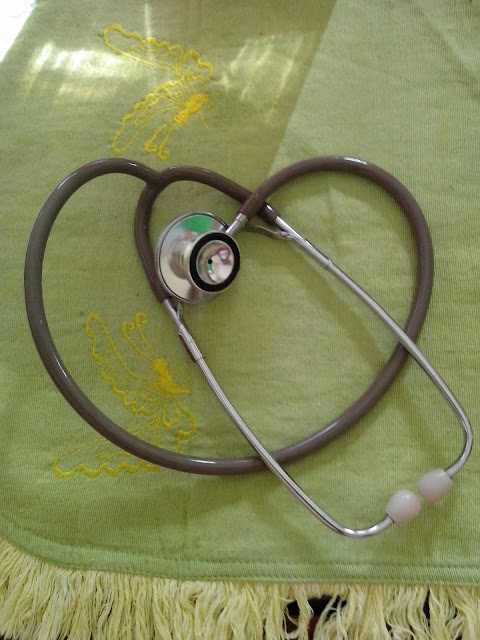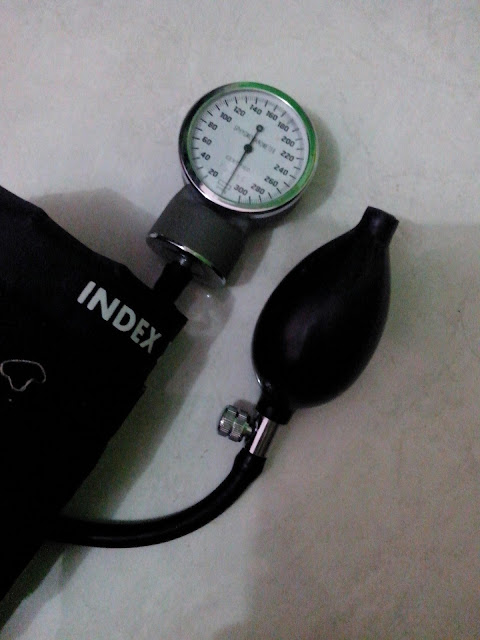A stethoscope is a medical device for listening to sounds inside the body. The initial stethoscope was invented in the early 19th century by French physician Ren� Laennec, but was actually trying to achieve a rather different end: doctor-patient distance....
Friday, July 18, 2014
Achieving Healthy Mother, Baby, and Family Unit
Posted by
Channel Maymoon
Labels:
Lipincot,
Maternal and Fetal Health,
Maternity,
nursing
at
7:24 PM
INTRODUCTION TO MATERNITY NURSING
Providing care to childbearing families is aimed at the ideal of
having every pregnancy result in a healthy mother, baby, and family unit. The
nurse today faces many evolving and challenging issues in achieving this goal.
Such advances as in vitro fertilization and embryo freezing have afforded people
opportunities once thought impossible. An increasing number of high-risk
pregnancies result from such factors as drug abuse, acquired immunodeficiency
syndrome, late or no prenatal care, teenage pregnancies, and pregnancies in
women older than age 35. Technologic advances in high-risk obstetric units,
fetal monitoring, sonography, and neonatal intensive care units are now
providing the means to improve maternal health and save fetuses and infants who
would not have survived years ago.
Today's childbearing families have many options. The planned birth
may take place in the traditional hospital setting, a birthing center, or at
home. The primary care provider may be a physician, a certified nurse-midwife,
or a lay midwife. Birth-related choices commonly include the use of labor,
delivery, and recovery rooms or labor, delivery, recovery, and postpartum rooms;
various birthing positions and analgesic methods; alternative pain-relief
strategies such as hydrotherapy; and the decision to allow children and others
to be present during labor and delivery. Regionalization of obstetric services
has provided childbearing families with access to the technologic advances and
skilled personnel capable of managing pregnancy or neonatal complications.
Economic changes in the health care climate have dramatically
affected the practice of nursing as cost-containment considerations have
shortened the hospital length of stay. Many hospitals have adopted a practice of
12- to 24-hour discharge after delivery coordinated with home health care
follow-up.
This combination of advancing technology, pregnancy risk factors,
and changing economics challenges the nurse to be a highly skilled clinician and
outstanding communicator.
TERMINOLOGY USED IN MATERNITY NURSING
-
Gestation—pregnancy or maternal condition of having a developing fetus in the body.
-
Embryo—human conceptus up to the 10th week of gestation (8th week postconception).
-
Fetus—human conceptus from 10th week of gestation (8th week postconception) until delivery.
-
Viability—capability of living, usually accepted as 24 weeks, although survival is rare.
-
Gravida (G)—woman who is or has been pregnant, regardless of pregnancy outcome.
-
Nulligravida—woman who is not now and never has been pregnant.
-
Primigravida—woman pregnant for the first time.
-
Multigravida—woman who has been pregnant more than once.
-
Para (P)—refers to past pregnancies that have reached viability.
-
Nullipara—woman who has never completed a pregnancy to the period of viability. The woman may or may not have experienced an abortion.
-
Primipara—woman who has completed one pregnancy to the period of viability regardless of the number of infants delivered and regardless of the infant being live or stillborn.
-
Multipara—woman who has completed two or more pregnancies to the stage of viability.
-
Living children—refers to the number of children a woman has delivered who are living.
A woman who is pregnant for the first time is a primigravida and is
described as Gravida 1 Para 0 (or G1P0). A woman who delivered one fetus carried to
the period of viability and who is pregnant again is described as Gravida 2,
Para 1. A woman with two pregnancies ending in abortions and no viable children
is Gravida 2, Para 0.
Wednesday, July 16, 2014
STRENGTHENING PELVIC FLOOR MUSCLES
Posted by
Channel Maymoon
Labels:
exercises,
Geriatric,
Geriatric Care,
incontinence management,
Urinary Incontinence
at
3:28 PM
Stress incontinence, the most common kind of urinary incontinence
in women, usually results from weakening of the urethral sphincter. In men, it
may sometimes occur after a radical prostatectomy.
You can help male and female patients prevent or minimize stress
incontinence by teaching pelvic floor (Kegel) exercises to strengthen the
pubococcygeal muscles. Here's how.
Learning Kegel exercises
First, explain how to locate the muscles of the pelvic floor.
Instruct the patient to tense the muscles around the anus, as if to retain
stools.
To identify this area initially, teach the patient to tighten the
muscles of the pelvic floor to stop the flow of urine while urinating and then
to release the muscles to restart the flow. Once learned, these exercises can be
done anywhere. Although Kegel exercises shouldn't be done while urinating, they
can be done at any other time.
Establishing a regimen
Explain to the patient that contraction and relaxation exercises
are essential to muscle retraining. Suggest that the patient start out by
contracting the pelvic floor muscles for 5 seconds, relax for 5 seconds, and
then repeat the procedure as often as needed.
Typically, the patient starts with 10 contractions in the morning
and 10 at night, gradually increasing the relaxation and contraction time.
Advise the patient not to use stomach, leg, or buttock muscles.
Also discourage leg crossing or breath holding during these
exercises.
Subscribe to:
Comments (Atom)
Powered by Blogger.



